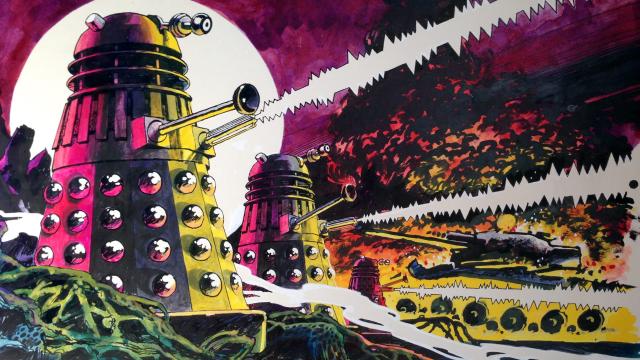Sometimes Doctor Who plays fast and loose with science. (Just like Star Trek and Star Wars.) But this show was created, in part, to teach science to children, and its producers used to subscribe to New Scientist. Here are 20 Doctor Who stories which are based on real scientific ideas.
Top image: Horsham Museum, via Toovey’s.
Lately, we’ve been hearing a lot of people say stuff like, “You shouldn’t expect real science from Doctor Who,” or “Why would you watch Doctor Who for plausible science?” And it’s perfectly true that Who can be entertaining without having realistic science, or bringing up real scientific theories. But it’s not completely unrealistic to expect science from this show, because Who has sometimes managed to aim for a somewhat higher standard — even if they wound up using some silly plot devices along the way. See for yourself, below.
1) The Daleks (1963-1964)
The scientific idea: Mutation, and the survival of nuclear war.
The resulting story: In their first appearance, Doctor Who‘s most famous enemies aren’t the unstoppable killing machines they become in later stories. Instead, they’re curiously vulnerable — they have mutated to survive the radiation poisoning left behind after a devastating war, but they are dependent on their survival machines and unable to leave their city. The Daleks are presented as one of two possible ways to survive a nuclear catastrophe, the other way being the medications the Thals take.

2) The Planet of Giants (1964)
The scientific idea: Pesticides that disrupt the environment. This story came pretty soon after the publication of the book Silent Spring by Rachel Carson, and the story revolves around a fictional insecticide called DN6 that will kill indiscriminately.
The resulting story: The actual plot device in “Planet of Giants” involves the TARDIS crew being shrunk to the size of insects due to a TARDIS malfunction — but it’s chock full of science education about insect behaviour, and also about the ecological dangers of irresponsible pesticide use.
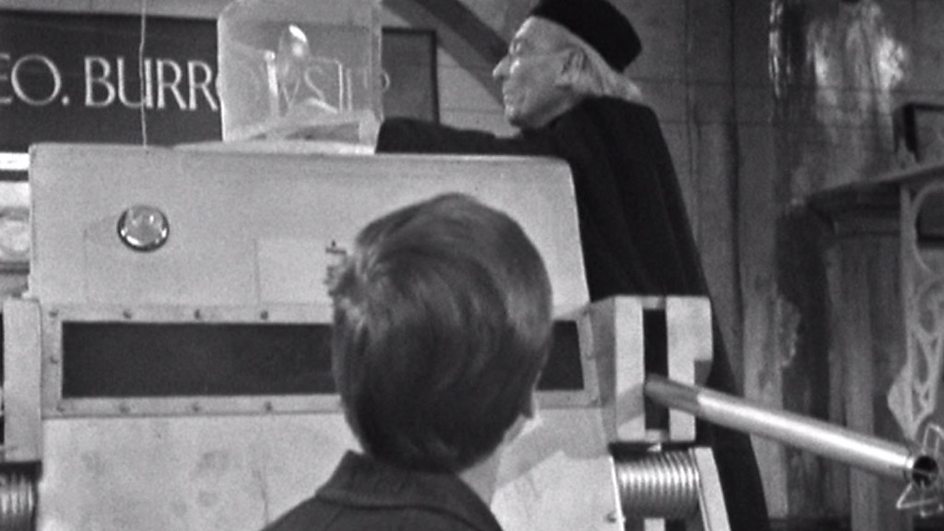
3) The War Machines (1966)
The scientific idea: Networked computers. Story editor Gerry David asked the show’s new scientific consultant, Kit Pedler, to imagine what might happen if the new Post Office Tower “took over.” Pedler envisioned a rogue computer that would connect to other computers via the telephone system in a sort of proto-Internet, looking to transcend its immobile physical form.
The resulting story: In 1966 London, the Doctor visits the new Post Office Tower, only to encounter a sentient computer named WOTAN that was originally designed to connect with other computers worldwide. Naturally, WOTAN’s intentions are less than benevolent.
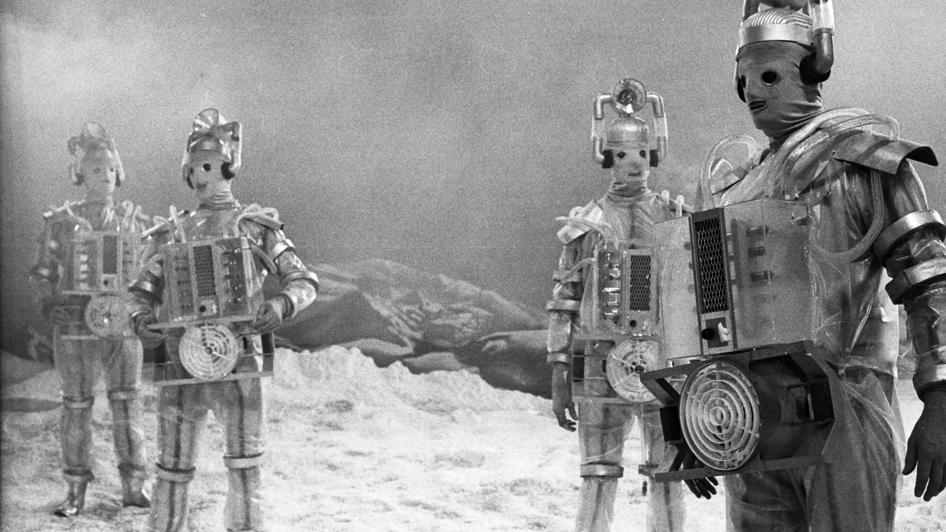
4) The Tenth Planet (1966)
The scientific idea: Pedler, still acting as the show’s scientific adviser, had an abiding interest in the then-pioneering science of organ transplantation. The first kidney transplant was successfully completed in 1954, followed by liver and lung transplants in the 1960s. Pedler, who had been following this work avidly, envisioned a future in which transplant surgery would become such a common practice that people would end up with mostly artificial bodies.
The resulting story: The extreme extrapolation from the basic conceptual seed of organ transplantation resulted in the Cybermen. First appearing in “The Tenth Planet,” they were a once-humanoid race that had experimented so extensively with cybernetic enhancements that little of their original organic forms remained. Unfortunately, the removal of organic matter led to diminishing emotional capacity, turning them into a ruthless, coldly logical race that would do anything to reach their collective goals. The rest of the science in the story, such as the rapid approach of a “twin” planet to Earth, is somewhat less well-realised.
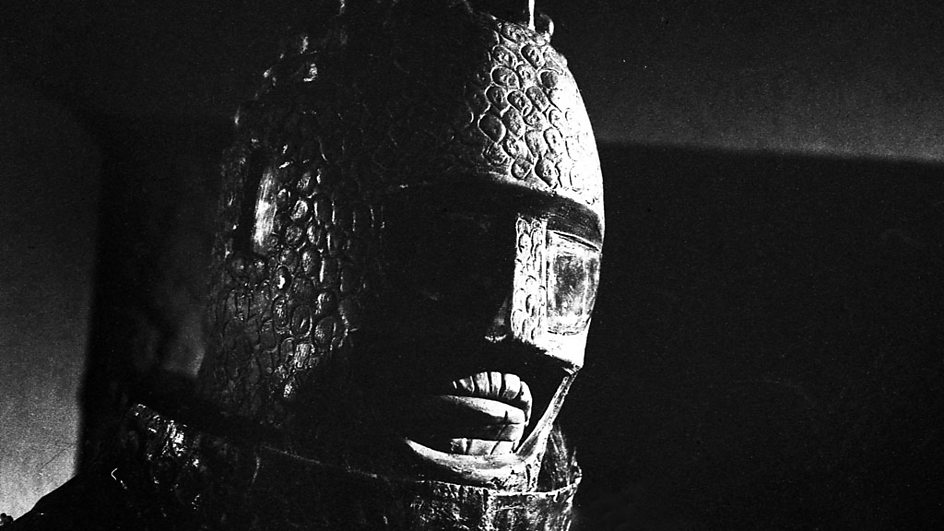
5) The Ice Warriors (1967)
The scientific idea: Writer Brian Hayles had read an article about a prehistoric mammoth whose corpse was perfectly preserved in the Siberian ice. And meanwhile, Hayles had been reading about the cold planet Mars, and wanted to imagine a life form that could survive in such an environment — and thus, the cybernetic alien Ice Warriors were created.
The resulting story: “The Ice Warriors” actually takes place during a new Ice Age, in which humans are using some kind of ionizing process to try and roll back the glaciers. But then they dig up an alien warrior, who looks sort of like a Viking, inside the ice — and they can’t keep attacking the glaciers with their ionizer until they know whether the alien’s spacecraft uses nuclear power, since this could cause a massive disaster.
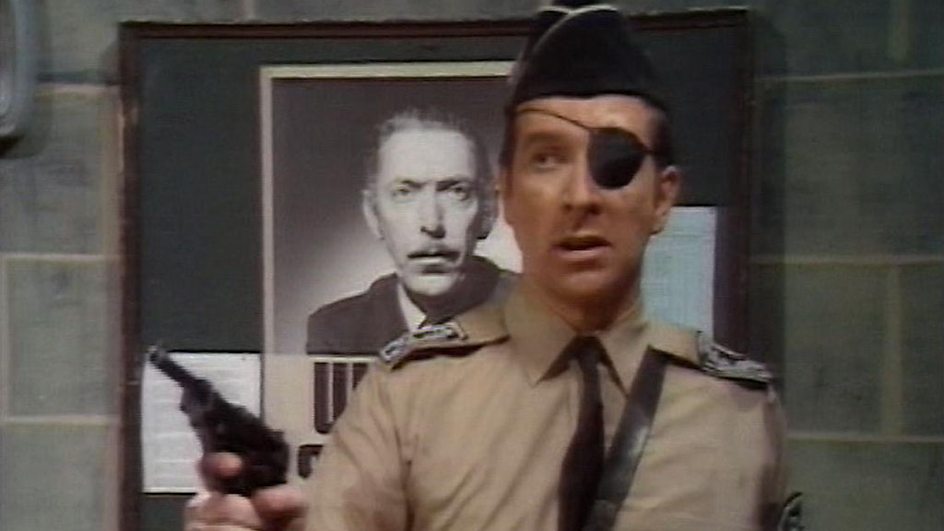
6) Inferno (1970)
The scientific idea: Writer Don Houghton was obsessed with the idea of the Mohorovic Discontinuity, the boundary between the Earth’s crust and its mantle. There was lots of talk about drilling down to that layer of the Earth, in something called Project Mohole. Houghton actually contacted the American embassy to ask for details about Project Mohole.
The resulting story: In “Inferno,” a mad scientist is drilling into the Earth’s crust to find a new energy source to replace petroleum — but this drilling project threatens to cause seismic instability and destroy the entire world in a kind of mega-volcano. But some not-so-scientific touches are added, including a weird sludge that turns people into hairy “Primords,” and a visit to an evil alternate universe.
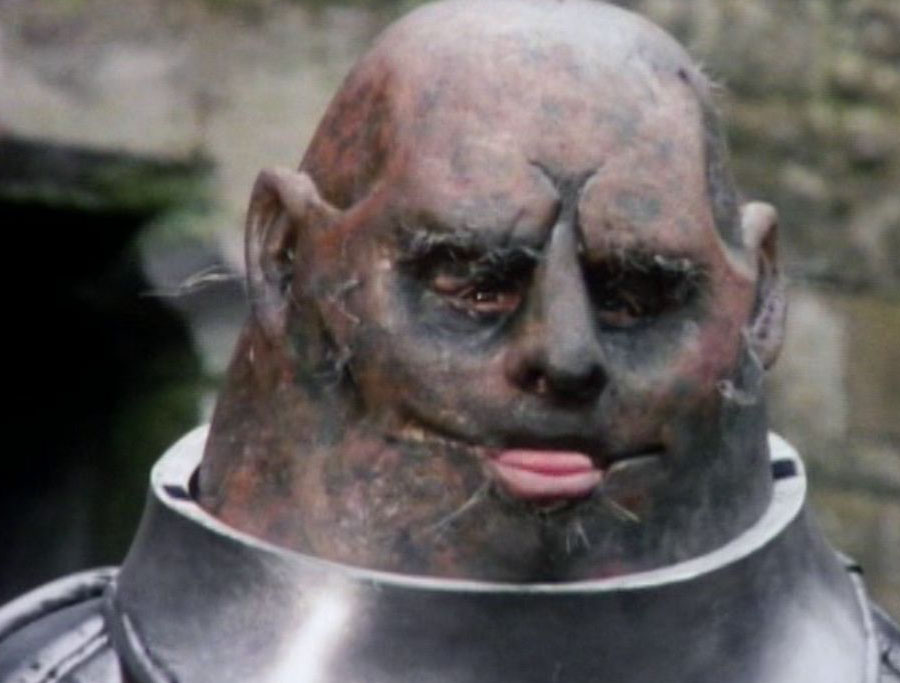
7) The Time Warrior (1973)
The scientific idea: Cloning.
The resulting story: The Doctor has his first encounter with the Sontarans, a warlike race he would face repeatedly over the course of the show. They reproduce by cloning themselves and, as a result, largely resemble each other. According to the Doctor, they mass-clone themselves at up to a rate of a million embryos every four minutes. These embryos take a mere ten minutes to reach adulthood and are, subsequently, dispatched on military missions.
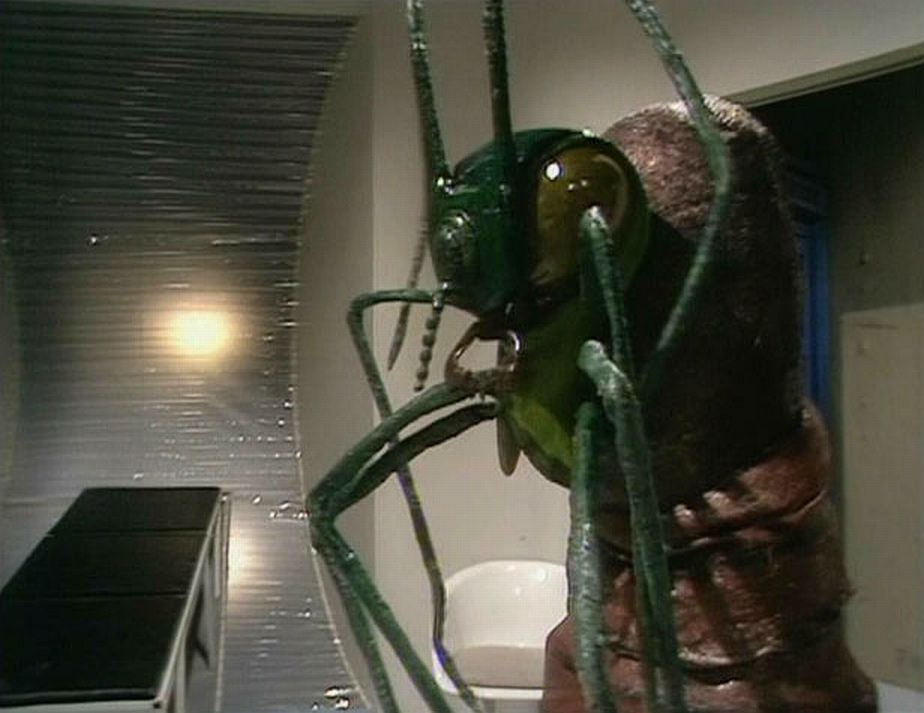
8) The Ark in Space (1975)
The scientific idea: A lot of the creepiness of this story comes from the real-life life cycles of insects which lay their eggs inside a host, which can then be consumed when the eggs hatch. This real-life horror previously appeared in A.E. Van Vogt’s novel The Voyage of the Space Beagle, but Doctor Who was the first broadcast media to feature endoparasitology, beating Alien by four years.
This story also features cryonics, the low-temperature preservation of organisms (including humans) for future resuscitation. A central (mostly accepted) idea is that the personality and memories of a human being would survive within a cryonically frozen brain and emerge intact upon resuscitation. The term was first coined in 1965 in conjunction with the founding of the Cryonics Society of New York. The Alcor Life Extension Foundation, the largest non-profit organisation involved in the research and practice of cryonics, was founded in 1972.
The resulting story: The Doctor arrives at the Nerva Beacon, a far-future space station where the remnants of the human race reside in suspended animation. They have, however, overshot their stipulated stasis period, thanks to the incursion of an insectile race known as the Wirrn.
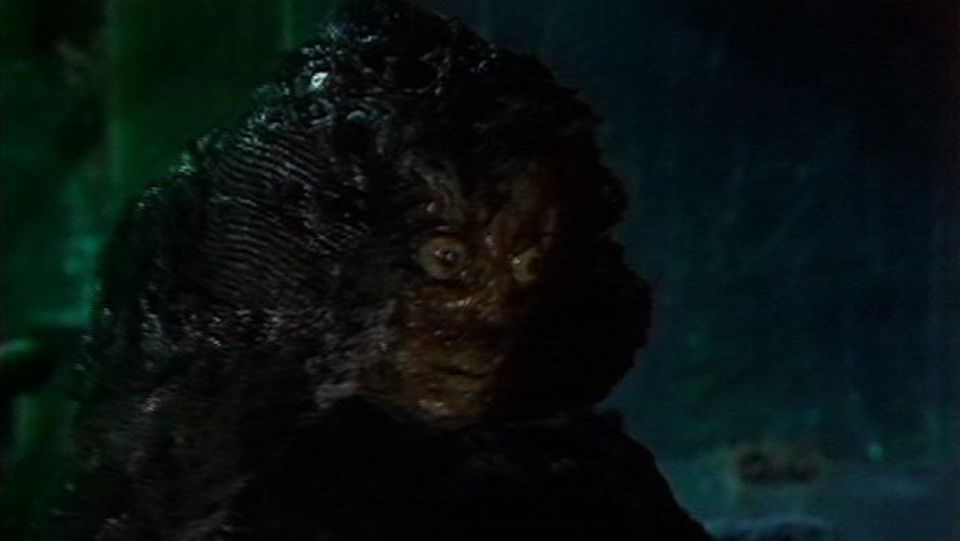
9) The Deadly Assassin (1976)
The scientific idea: Black holes, regions of spacetime in which matter is so dense that the gravitational field is too strong for anything (including light) to escape from it. At their center lies a gravitational singularity in which the laws of physics break down somewhat.
The resulting story: Black holes and the attendant physical anomalies have been used as the pretext for many Doctor Who stories but they are particularly significant in this episode — which reveals that the Eye of Harmony (the power source for Gallifrey and its time travel technology) is the center of a black hole.
“The Deadly Assassin” is also notable for prominently featuring a massive electronic neural network that converts the Time Lords’ thought patterns and accumulated knowledge into a fully immersive virtual reality environment. What was that network environment called? Why, the Matrix, of course. Users with access to its control system can even give themselves enhanced abilities within it.
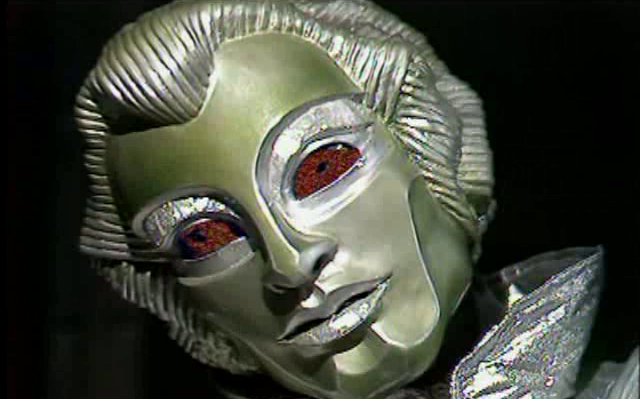
10) The Robots of Death (1977)
The scientific idea: There are two great ideas in this story: a robot uprising, in which the robots are reprogrammed to overcome their prohibition on murder; and the storm-miner, which mines sandstorms. Writer Chris Boucher explained:
It became for me a very fascinating conundrum, working with the whole concept of machine intelligence and asking ‘at what point does machine behaviour become intelligent?’ If you read a lot of mainstream science fiction writing that was published during the Sixties and early Seventies, you will find much of it populated with questions about machine life and machine intelligence. There are books like Skirmish by Clifford Simak, for instance: it starts as a semi-humorous piece about a writer being attacked by his typewriter and his sewing machine, and progresses into a study of aliens who have come to Earth with ideas about freeing the machines.
The Storm-miner was a nice idea, but basically it was a steal from the Sand-miners in Frank Herbert’s Dune. I did at least have the decency to change it sufficiently so that it was actually mining storms rather than harvesting sand.
The resulting story: “Robots of Death” is chock full of questions about what happens to a society that’s too dependent on its machines, and the strange sort of fear that can come when robots enter the Uncanny Valley. As a portrayal of a class-riven society that has a deeply ambivalent relationship with technology, it’s one of the best pieces of world-building Doctor Who ever had.
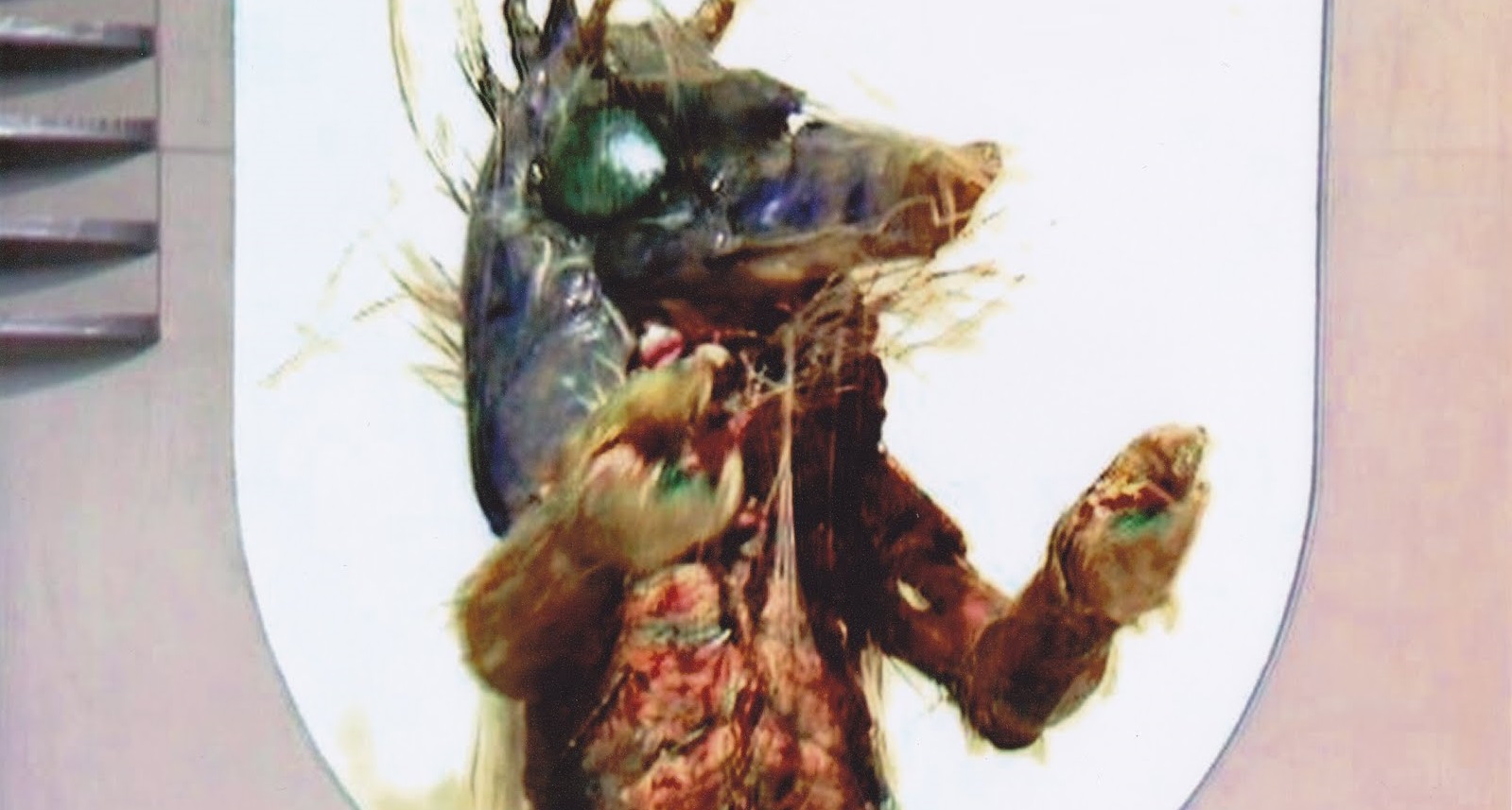
11) The Invisible Enemy (1977)
The scientific idea: A newspaper article about virus mutations convinced writers Bob Baker and Dave Martin that an intelligent, fast-adapting virus might make for an impressive antagonist.
The resulting story: An intelligent parasite takes over the Doctor’s mind, compelling him to enter a self-induced coma to slow its progress. And that’s where the science gets notoriously silly — the Doctor and Leela “clone” themselves so they can be shrunk and put inside the Doctor’s brain. And the clones not only are grown to adulthood instantly, they have the originals’ memories… and their clothing.

12) The Leisure Hive (1980)
The scientific idea: Tachyonics, the notion of a hypothetical particle that moves faster than light. Christopher H. Bidmead, a former science journalist, had just taken over the role of script editor when this story was made, and he inherited a set of scripts that were somewhat silly and focused on gangster tropes. He went about rewriting them to emphasise the idea of the Tachyon Generator, the device that the scientist Hardin is trying to develop, which can allow for rejuvenation as well as temporary duplication of objects.
The resulting story: “The Leisure Hive” is somewhat let down by problems with execution, but having a scientist main character, and emphasis on experimentation, gives the story a lot of its drive. In particular, the big cliffhanger to episode two involves Romana attempting to recreate Hardin’s experiments with tachyons — and she seems to succeed at first, only to come back a moment later and discover a grotesque time/space warp, with an explosion held in stasis. (And the Doctor has just gotten inside the Tachyon Generator because Romana assured him it was safe.) The actual story is about a race of former warriors trying to reinvent themselves and find a way to survive in spite of being sterile after their last great war.
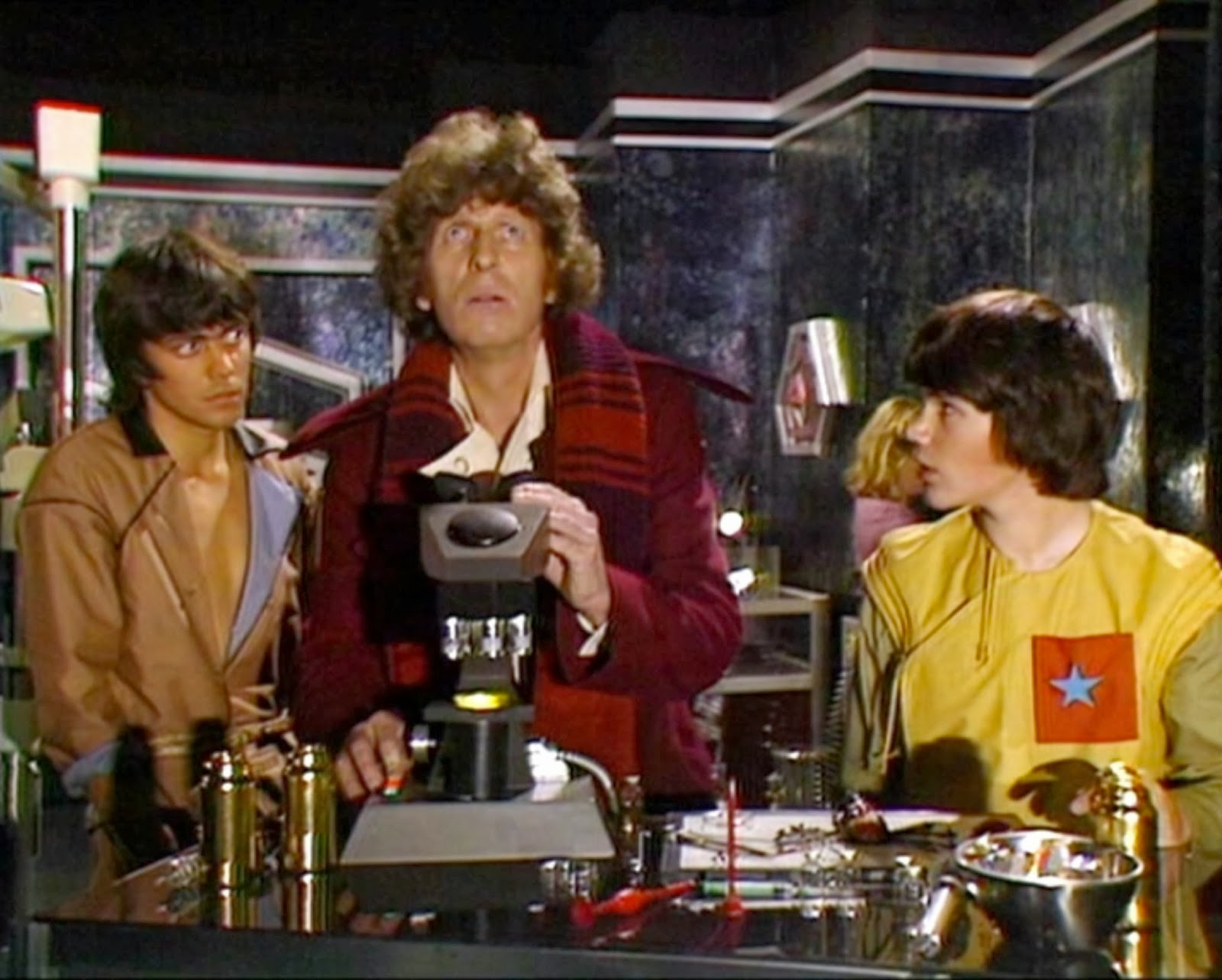
13) Full Circle (1980)
The scientific idea: Pocket universes, and evolutionary biology. This story introduces the idea of Charged Vacuum Emboitments (CVEs) which lead to a whole other universe called E-Space.
The resulting story: The Doctor lands on the planet Alzarius where he meets a group of humans who are trying to rebuild their crashlanded spacecraft. They are besieged by Marshmen and Marshspiders and it soon becomes apparent that these creatures as well as the humanoids encountered by the Doctor represent different evolutionary stages springing from one common DNA source. The crashed space freighter is thousands of generations old.
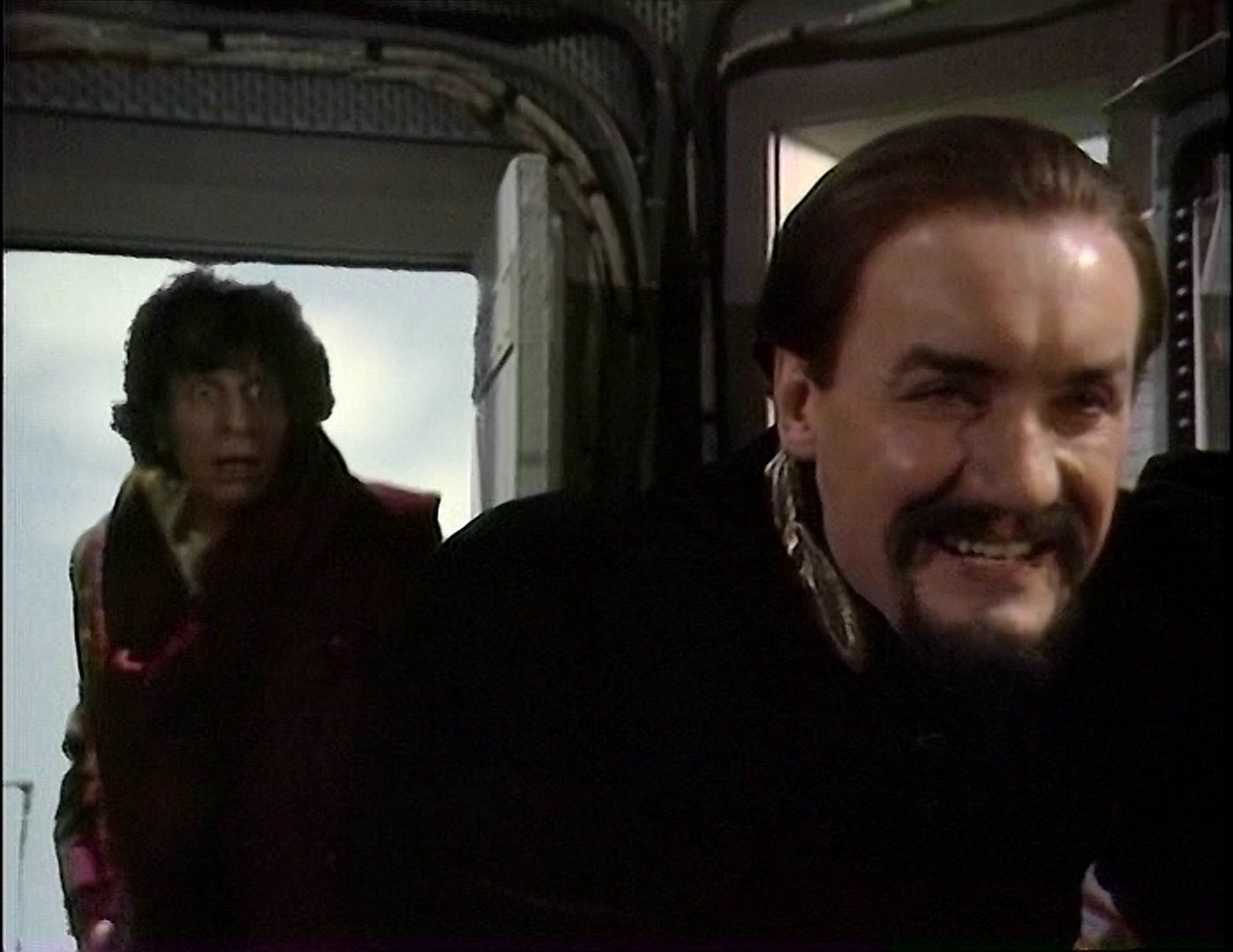
14) Logopolis (1981)
The scientific idea: Entropy, the second law of thermodynamics. Bidmead had seeded throughout the show’s 18th season a set of clues to the conclusion of a loose story arc — those “Charged Vacuum Emboitments” that lead to pocket universes are actually there to deal with the entropy in the universe, which has passed the point of total collapse. And this story is also inspired by Bidmead’s fascination with the rise of the personal computer, as he told Doctor Who Magazine:
“The set-up on Logopolis — the corridors, their method of communication, the Monitor, etc. — were all based on things I had discovered about the interior construction of the micro computer. The idea that maths was fundamental to the continued existence of the Universe went deeper than that. It harked back to what I took to be the most important principle of Doctor Who; the ultimate, utter importance of the scientific method, and the need to get a whole new generation of people excited by the scientific method.”
The story is full of references to real-life figures like biologist Thomas Huxley and his rival, Ludwig Wittgenstein.
The resulting story: Sadly the actual story is long on atmosphere and ideas, and short on actual story-telling. Part of this is due to some behind-the-scenes chaos, as the previous story “Keeper of Traken” went way over budget and shooting length, and Bidmead was forced to write the character of Nyssa into “Logopolis” at the last minute. But also, the Master’s scheme seems bizarre and half-baked, even by his standards, and the ending in which the Master tries to blackmail the entire universe seems crazily impractical.
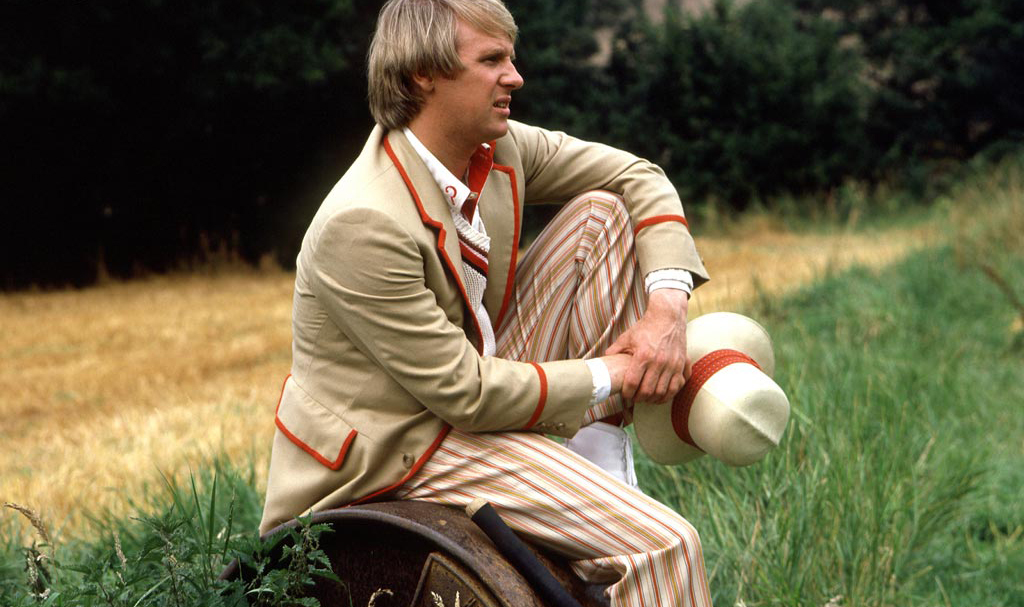
15) Castrovalva (1982)
The scientific idea: Bidmead was inspired by the work of Dutch artist and mathematician Maurits Cornelis Escher, especially a print called “Ascending and Descending” which features a staircase that loops back onto itself, and a lithograph called “Castrovalva,” depicting an Italian village on top of a sheer cliff. Bidmead wanted to write a story that incorporated the mathematical concept of recursion and featured environments (like the staircase in Escher’s print) that presented recursive qualities.
The resulting story: In the process of evading traps laid by the Master and helping the Doctor regenerate, Tegan and Nyssa direct the TARDIS to Castrovalva, a serene quasi-medieval city on a mountainside. It turns out, however, that the Dwellings in the city circle in on themselves and appear to be trapped within a recursive occlusion. Standard rules of dimensional space do not apply and the whole recursive labyrinth is revealed to be another one of the Master’s traps.

16) Arc of Infinity (1983)
The scientific idea: Quark matter is formed when the pressure exerted on a neutron star is great enough to break down the structure of individual neutrons to their constituent quarks. Quark stars – entire stars made up on quark matter – are theoretical objects familiar to astrophysicists. It is hypothesized that quark stars would be highly magnetized and would consist of unstable ‘strange matter’.
The resulting story: An antimatter entity (later identified as Omega) crosses into normal space via the ‘arc of infinity’ and attempts to bond with the Doctor in order to enter a stable state. The arc of infinity is another name for Rondel, an intergalactic region that used to be the location of a collapsed quark star which created a curve between dimensions and emitted ‘quad magnetism,’ described by the Doctor as “the only force known to shield antimatter.” Omega entered normal space via this curve, concealed behind the quad magnetism.

17) The Mark of the Rani (1985)
The scientific idea: Pip and Jane Baker were inspired by an article about sleep receptors in the brain that they read in New Scientist. Already determined to create an amoral scientist character called the Rani (“queen” in Hindi), they developed a storyline in which she experiments on the brain’s sleep centres.
The resulting story: The Doctor lands on Earth during the Luddite Uprisings and finds that the Master and an evil Time Lady called the Rani are attempting to alter human history. The Rani is extracting chemicals from the brains of local workers for her own experiments, only escalating the local chaos and endangering the work of George Stephenson.

18) The Empty Child/The Doctor Dances (2005)
The scientific idea: Nanotechnology, the science of matter manipulation on a atomic/molecular scale. The episode focuses particularly on nanomedicine, the use of nanomaterials for medical purposes.
The resulting story: The Doctor and Rose pursue a strange object to 1941 London, which is being terrorised by a mysterious child wearing a gas mask. It turns out that nanogenes – legions of tiny robots designed to work on the body at the molecular level to heal injuries and fight infections — had been brought to London on a Chula warship. The first human being they ever encountered was wearing a gas mask, so they assumed that a mask was a normal physiological feature, growing one on every human being they subsequently ‘healed’.

19) Blink (2007)
The scientific idea: As this article explains, “Blink” is a great exploration of the Copenhagen Interpretation of quantum mechanics, as the Weeping Angels are described as “quantum-locked”: They can only move when they’re not observed, because of something called the Quantum Zeno Effect.
The resulting story: “Blink” is justly considered one of the best Doctor Who stories of all time, in part because of its clever use of a villain that you can never turn your back on.

20) Flatline (2014)
The scientific idea: A world of two dimensions, as explored in Edwin Abott’s Flatland.
The resulting story: Probably too soon to post spoilers about this one, but suffice to say that it’s a corking great tale of abduction and the battle of wits against creatures from another dimension.
